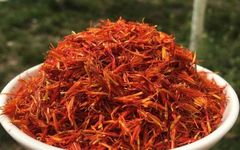Click the top left ↑ “Dao Yi Chen Ming” to follow the public account

Hong Hua (Safflower)
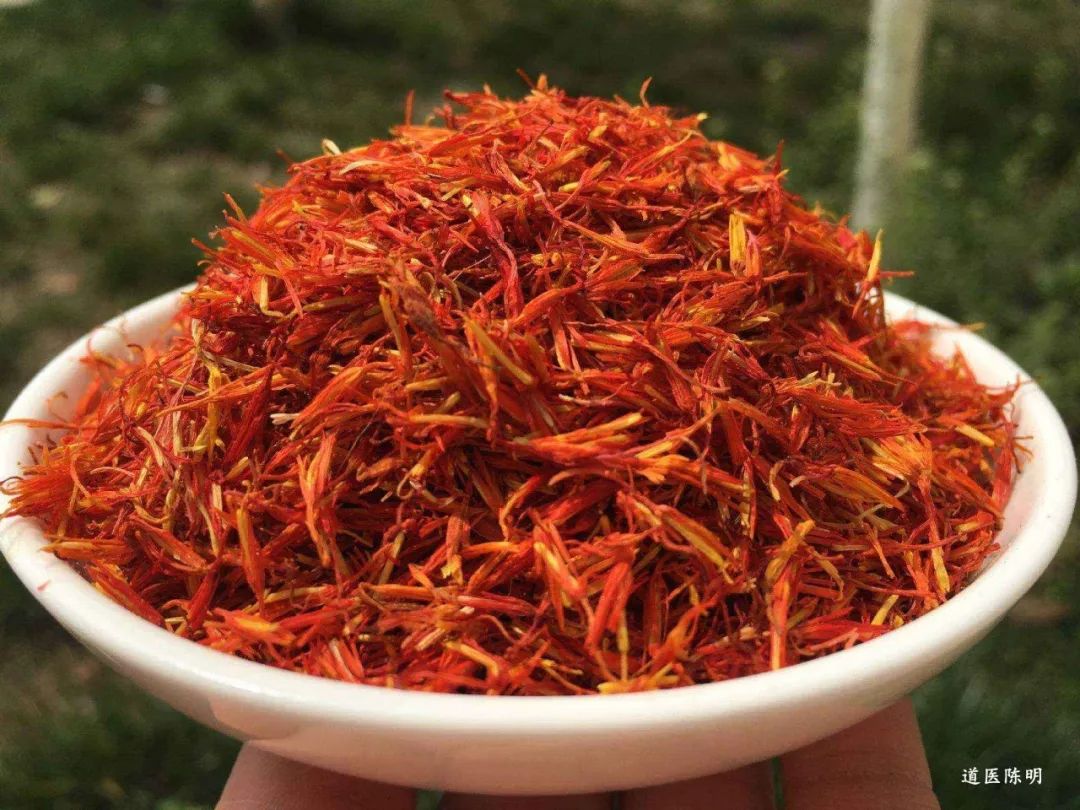
Hong Hua, the name of a Chinese herb, refers to the dried flowers of the plant Carthamus tinctorius L. from the Asteraceae family. The flowers are harvested in summer when they change from yellow to red and are then dried in the shade or under sunlight. It is widely cultivated across the country. It has the effects of invigorating blood circulation, regulating menstruation, dispelling blood stasis, and alleviating pain. It is used for conditions such as amenorrhea, dysmenorrhea, retained lochia, abdominal masses, chest pain, abdominal pain due to blood stasis, and injuries from falls.
01Medicinal Part
The flowers of the Asteraceae plant Hong Hua.
02Aliases
Red Blue Flower, Spiny Safflower, Grass Safflower.
03Plant Morphology
A one-year-old herb, growing 40 to 100 cm tall. The stem is erect, branched at the top, and has fine shallow grooves on the surface. It is hairless. The leaves are alternate, nearly without petioles, and slightly embrace the stem; the leaf blades are long oval or ovate-lanceolate. The flower heads are terminal, 2 to 3 cm in diameter, arranged in an umbrella-like shape; the involucre is nearly spherical, with several rows of bracts, the outer 2 to 3 rows leaf-like with serrated edges, and the inner rows oval-shaped, with white membranous, transparent edges; the innermost row consists of linear scale-like bracts, also transparent and membranous; there are many flowers, all tubular, orange-red, about 2 cm long; the corolla tube is slender and 5-lobed at the tip; there are 5 stamens, with short filaments attached at the corolla mouth, and the anthers are linear, forming a tube around the pistil; there is 1 pistil, with a slender style extending beyond the anther tube, and the stigma is shallowly bifid. The achene is inverted ovate, with 4 ridges, slightly oblique at the base. The flowering period is from May to July, and the fruiting period is from July to September.
04Distribution
Originally from Egypt, it is widely cultivated in China.
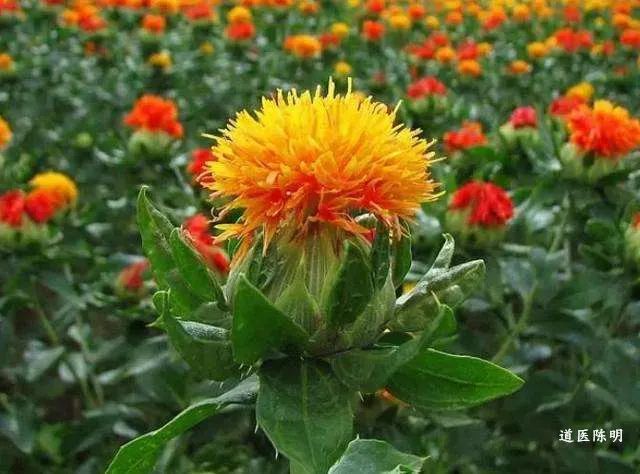
05Harvesting and Processing
In May to June, when the flowers bloom and the corolla changes from yellow to red, the tubular flowers are harvested in the morning before the dew has dried, taking care to protect the ovaries for seed production. The flowers are dried in weak sunlight or in the shade, or can be dried with gentle heat.
06Herb Characteristics
Tubular flowers without ovaries, 1 to 2 cm long. The surface is reddish-yellow or red. The corolla tube is slender, 5-lobed at the tip, with lobes that are narrow and 5 to 8 mm long; there are 5 stamens, with the anthers forming a tubular structure, yellowish-white; the stigma is long oval, slightly bifid at the tip. The texture is soft. It has a faint fragrance and a slightly bitter taste.
07Properties and Channels
Warm in nature, pungent in flavor. It enters the Heart and Liver meridians.
08Functions and Indications
Invigorates blood circulation, regulates menstruation, dispels blood stasis, and alleviates pain. It belongs to the category of blood-invigorating and stasis-dispelling herbs.
09Clinical Applications
The dosage is 3 to 9 grams, decocted for oral administration. It is used to treat amenorrhea, dysmenorrhea, retained lochia, abdominal masses, injuries from falls, and painful sores.
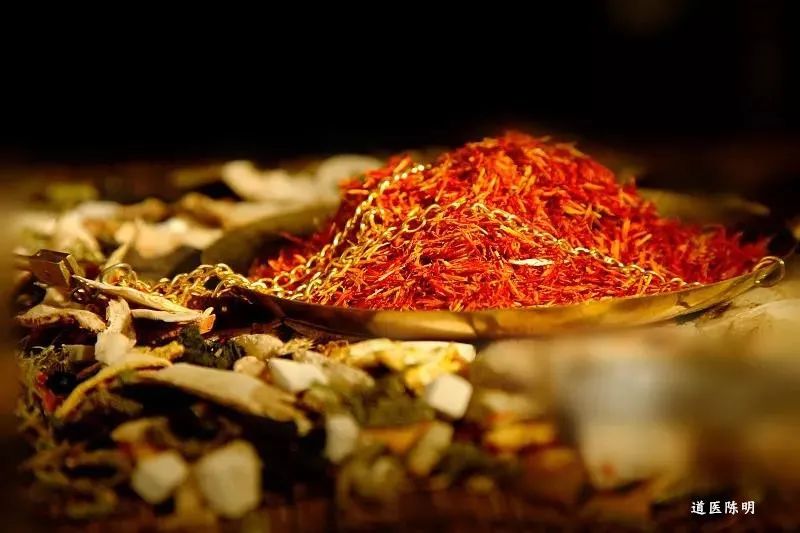
10Pharmacological Research
It has a mild stimulating effect on the heart, reduces coronary resistance, increases coronary flow, and enhances myocardial nutritive blood flow; it has anti-myocardial ischemia, myocardial infarction, and arrhythmia effects; improves peripheral microcirculation; has anticoagulant properties; lowers blood lipids; enhances tolerance to hypoxia; stimulates the uterus; relieves intestinal spasms; has immunological activity and anti-inflammatory effects; can alleviate metabolic disorders of monoamine neurotransmitters in brain tissue; may cause mutations. Animal experiments indicate that small doses of the decoction have a stimulating effect on the heart, while large doses have an inhibitory effect; it has a significant direct constricting effect on blood vessels; the yellow pigment of safflower can significantly prolong the survival time of mice in a hypoxic environment; it has a significant inhibitory effect on ADP-induced platelet aggregation; and it has analgesic effects.
11Chemical Components
Contains safflower glycoside, new safflower glycoside, pre-safflower glycoside, safflower quinone glycoside, tritriacontane, β-sitosterol, as well as dipalmitic acid, glycerides, oleic acid, linoleic acid, chlorogenic acid, and 13 other components. It has also been reported to contain safflower yellow pigment.
12Contraindications
Use with caution in pregnant women and those with excessive menstruation.
13Compatible Formulas
1. For dysmenorrhea: 6 grams of Hong Hua, 24 grams of Ji Xue Teng (Spatholobus suberectus). Decoct with an appropriate amount of yellow wine for consumption. (“Fujian Materia Medica”)
2. For women with obstructed menstruation, such as blood stasis: Hong Hua (finely chopped), Su Mu (crushed), and Dang Gui (Angelica sinensis) in equal parts: each 30 grams, with 1.5 liters of water, first decoct the flowers and wood. Then add a cup of wine and Dang Gui and decoct again. Take half a liter, divided into two doses, on an empty stomach before meals, warm. (“Zhu’s Collection of Verified Formulas” Hong Hua San)
3. For cough with qi deficiency: Hong Hua, Huang Qin (Scutellaria baicalensis), Su Mu each 2.4 grams, Tian Hua Fen (Trichosanthes kirilowii) 1.8 grams. Decoct for empty stomach consumption. (“Bamboo Forest Women’s Medicine” Hong Hua Tang)
4. For cervical cancer: Hong Hua, Bai Fan (Alumen) each 6 grams, and 30 grams of Wa Song (Euphorbia humifusa). Decoct, first fumigate then wash the external genitalia, once or twice daily for 30 to 60 minutes each time, reheat for reuse, each dose can be used repeatedly for 3 to 4 days. [“Shanghai Journal of Traditional Chinese Medicine” 1984, (9): 9]
5. For initial swelling and pain that is unbearable: Hong Hua, Chuan Shan Jia (Manis pentadactyla, roasted) each 15 grams, and 9 grams of Gui Wei (tail of Angelica). Two cups of yellow wine, decoct to one cup. Mix with 1.5 grams of Ferula (asafetida) and 0.15 grams of Musk for consumption. (“Surgical Great Achievements”)
6. For red swelling and half-body redness that gradually spreads: Hong Hua powder, mixed with vinegar for external application. (“General Discussion on Children’s Health”)
7. For chronic ear discharge with foul odor: 0.3 grams of Hong Hua, 30 grams of Bai Fan (burnt to ash). Grind the above ingredients into a fine powder, use a small amount in the ear. (“Sheng Hui Fang”)
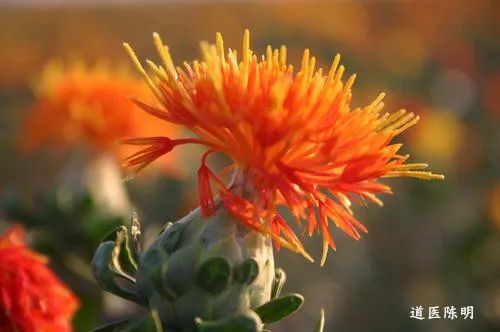
(Thank you for reading, please share this article with more friends to help everyone stay away from diseases!!!)

This text and video are from the internet, shared for informational purposes only. If there is any infringement, please notify for removal.

